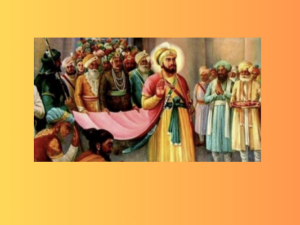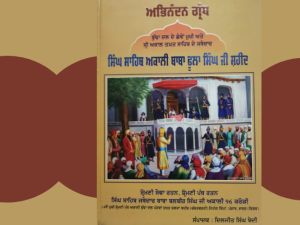The Kirpan, a ceremonial sword, holds a profound significance within Sikhism, symbolizing the virtues of courage, spirituality, and the commitment to uphold justice. The origins of the Kirpan’s association with Sikh identity date back to the time of Guru Hargobind Sahib, who introduced the concept of Miri and Piri (temporal and spiritual sovereignty) and formalized the use of the Kirpan among the Sikhs. This tradition was further reinforced by Guru Gobind Singh Ji, who established the Khalsa in 1699, making the Kirpan an integral part of the Sikh identity through the Five Ks.
Historically, the Kirpan has been a revered object, representing both spiritual and martial virtues. Ancient texts and traditions across cultures, such as in Greece, Hinduism, and Islam, have symbolized the sword as a mark of bravery, masculinity, and divine protection. For Sikhs, however, the Kirpan transcends mere symbolism; it embodies the Sikh commitment to protect the weak, fight injustice, and uphold truth, as mandated by the Gurus. Guru Gobind Singh Ji’s “Zafarnama” underscores this philosophy, stating that when all other means fail, it is righteous to resort to the sword.
In colonial India, Sikhs had to resist British efforts to suppress the use of the Kirpan, which culminated in legal victories allowing Sikhs to wear it as an expression of their religious identity. Post-independence, the Kirpan’s status was safeguarded through various legal provisions, including acknowledgments by the Nehru Committee in 1928 and the Sapru Committee in 1945, which recognized Sikhs’ right to carry the Kirpan as an essential aspect of their religious practice. Government orders in the early 20th century further affirmed this right, allowing Sikhs to wear a specific length of Kirpan.
The recent controversy surrounding the Kirpan in civil aviation highlights ongoing tensions between religious freedoms and security policies in India. The new directive from the Bureau of Civil Aviation Security prohibits Sikh staff from wearing Kirpans on duty, though Sikh passengers may still carry small Kirpans on domestic flights. This policy shift has raised concerns among Sikh leaders and rights advocates, who argue that it violates religious freedoms enshrined in Indian law. Former National Commission for Minorities chairperson Tarlochan Singh has urged the Civil Aviation Ministry to reconsider this decision, emphasizing that prohibiting Sikh staff from wearing Kirpans while on duty is discriminatory and infringes upon their religious rights.
This ongoing debate around the Kirpan underscores the complex intersections of faith, identity, and modern regulatory frameworks. For Sikhs, the Kirpan is not just an article of faith but a moral obligation and a reminder of their commitment to justice. As India grapples with balancing religious freedoms and security concerns, the treatment of the Kirpan remains a focal point in discussions about religious rights, minority identity, and the state’s role in accommodating diverse cultural practices. The Sikh community’s advocacy for the right to wear the Kirpan in all settings serves as a testament to the enduring significance of this symbol and its role in shaping Sikh identity in contemporary India.






